Best MTB mud tires – grip in even the worst winter conditions
MTB tires that will help keep you and your bike upright in the most slippery trail conditions

Here in the Northern Hemisphere, the days are getting shorter and winter is very much here. The summer dust is a distant memory and our local trails are covered in thick, gloopy goodness. With that, it's time to invest in the best MTB mud tires as your best mountain bike tires for fast-rolling summer won't do you much good, providing about as much grip as a banana peel on a pavement.
The best MTB mud tires take advantage of sizeable tread patterns with mud-shedding abilities to claw in around corners and help you stay upright. They're rarely the fastest on smooth terrain, but they can transform your ride when the weather turns nasty.
So it's time to break out the floor pump and your best tubeless tire sealant to get your bike winter-ready, so keep reading for our pick of the best MTB mud tires to conquer the slop so you can keep shredding the trails through the winter months. If you are unsure what to look for when choosing a winter-specific tire, skip to the bottom for everything you need to know to choose the best MTB mud tires.
Best MTB mud tires
Why trust BikePerfect

Specifications
Reasons to buy
Reasons to avoid
Featuring a moto-inspired tread pattern, the Hillbilly has a squared-off profile, and the small blocks do well to punch through the surface for traction. The Hillbilly is made from Specialized's Gripton compound which improves high and low-frequency damping and eats up small bumps and rough sections alike.
The Grid casing offers plenty of protection from sharp sidewall-slashing rocks, and the tire maintains purchase on slippery roots. When the trail does dry out, the tall knobs squirm under pressure, particularly on Tarmac transfer sections.
With the Hillbilly offering the same or better slop performance as tires that are double the cost, why spend more?
To find out more on why we scored this tire five out of five, check out our full Specialized Hillbilly Grid 2Bliss review.
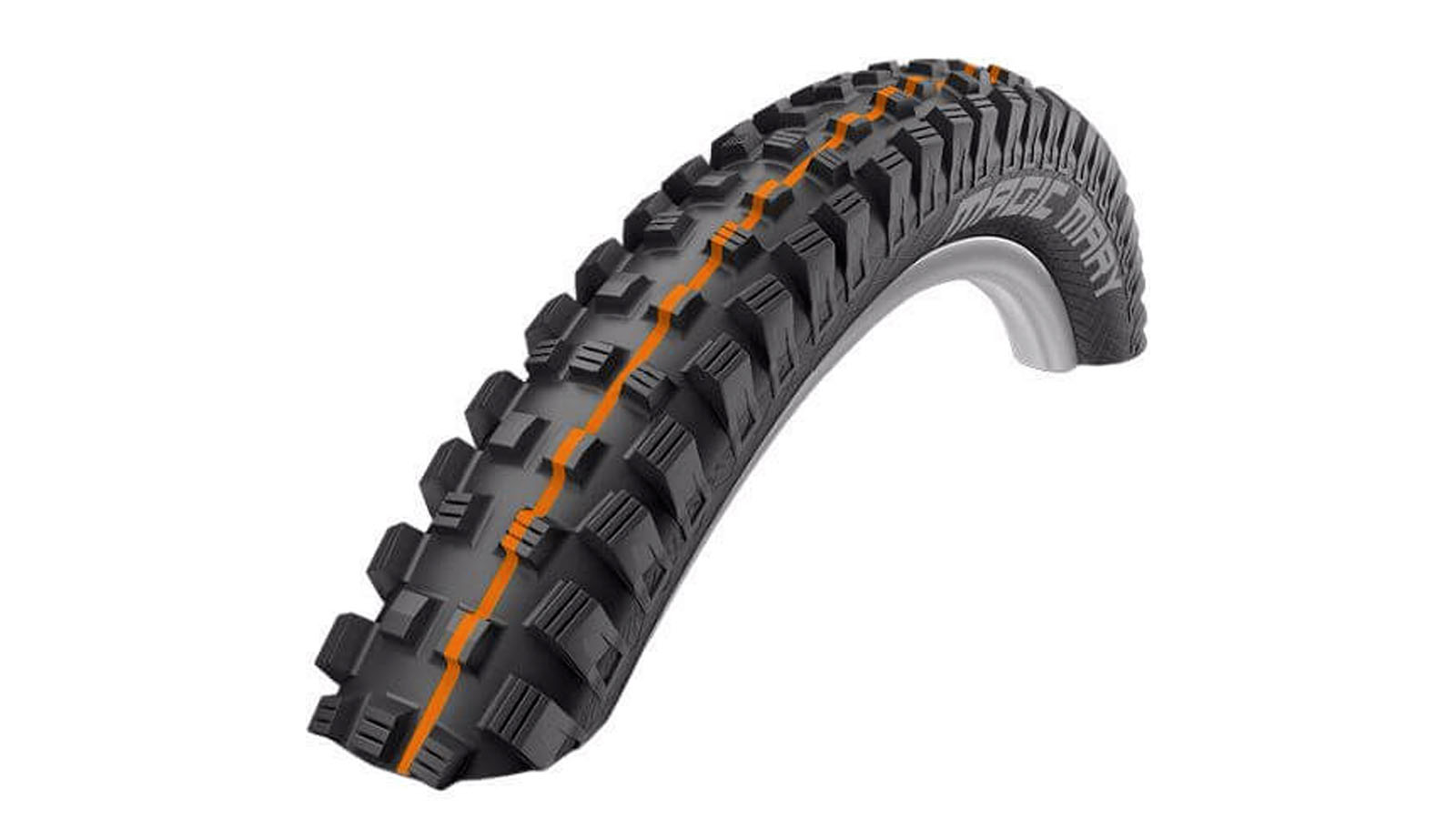
Specifications
Reasons to buy
Reasons to avoid
There is such a thing as overkill when it comes to mud tires, and not everybody needs 8mm spikes, and that's where a tire like the Magic Mary comes into its own.
With moto-style blocks over the casing, the tread doesn't hang onto grime, and the simple but sizeable knobs keep you on track through the muck. The side and center blocks are siped so that rocks and roots don't feel like riding on wet ice.
It's not a mud-specific tire, but it performs well on sloppy trails and it's not just limited to trail soup, serving well as a high-traction all-rounder.
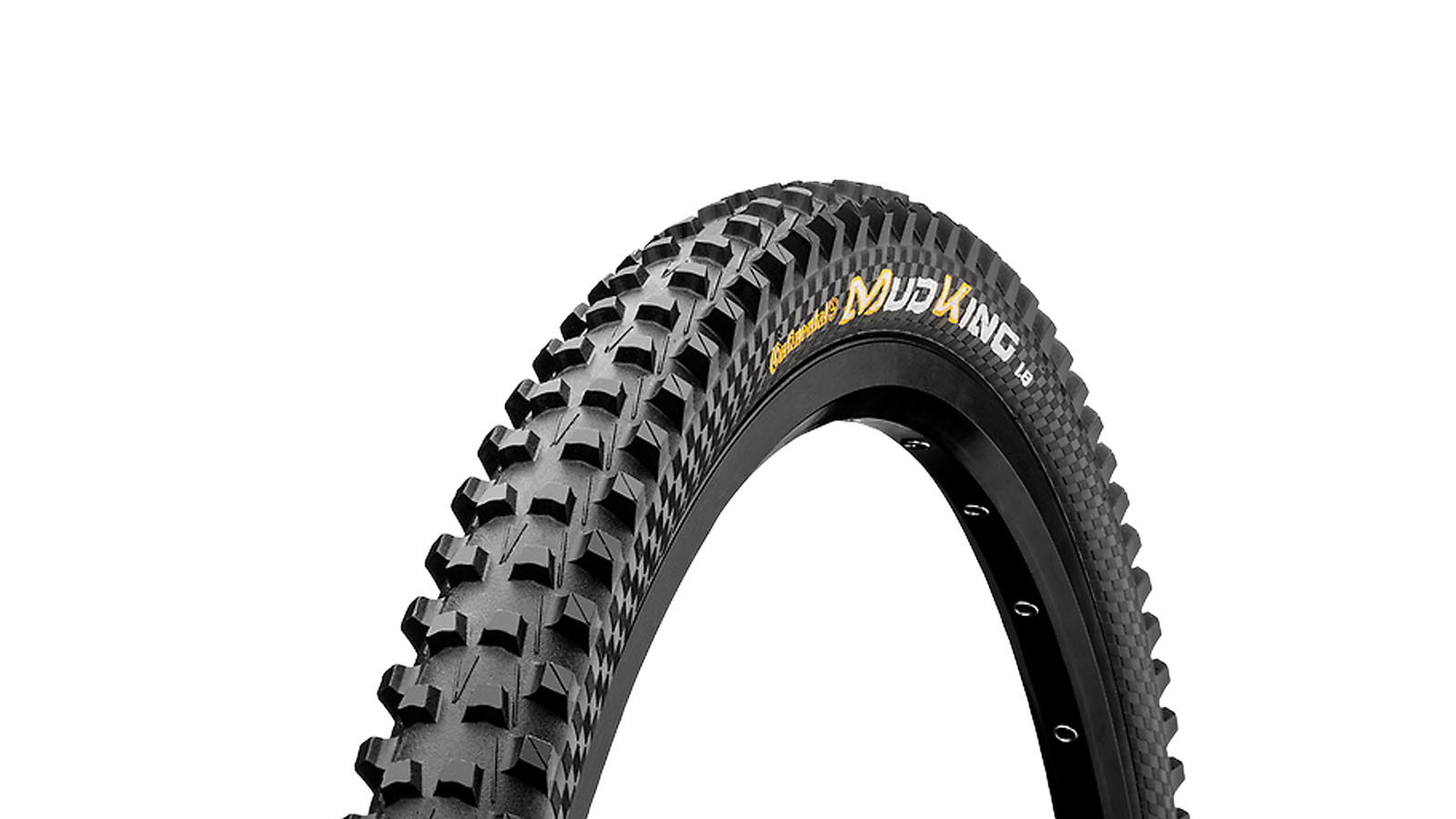
Continental Mud King
Specifications
Reasons to buy
Reasons to avoid
Developed in collaboration with Atherton racing, the narrow round profile of the Mud King features widely spaced angular knobs for traction in deep mud and over roots and rocks, and the shoulder blocks are siped to help them claw through corners.
Made from the brand's BlackChili compound, the Mud King is a surprisingly fast-rolling tire and comes in both an Apex and ProTection casing, both with the same tread pattern. The Apex version is the best downhill mountain bike casing, with a soft elastomer rubber sandwiched between the casing piles to help stave off impacts — it also weighs twice as much as the enduro/trail version.
The ProTection version only comes in a 1.8in width, while the Apex version is available in 2.3in.

Schwalbe Dirty Dan Super Gravity
Specifications
Reasons to buy
Reasons to avoid
Who can forget when Danny Hart rode a set of Dirty Dan's to the 2011 Downhill World Championship in super sloppy and wet conditions — and how stoked Rob Warner and Nigel Page were to watch him do it.
The Super Gravity version is slightly less substantial than the full DH casing, but they still feature the same tread pattern and the soft slow-motion rebound Addix Ultrasoft compound rubber hangs on tight; which is great for muddy corners, and not so great for fire road climbs.
The towering blocks in the center strip and angular shoulder knobs are widely spaced to keep the mud at bay.
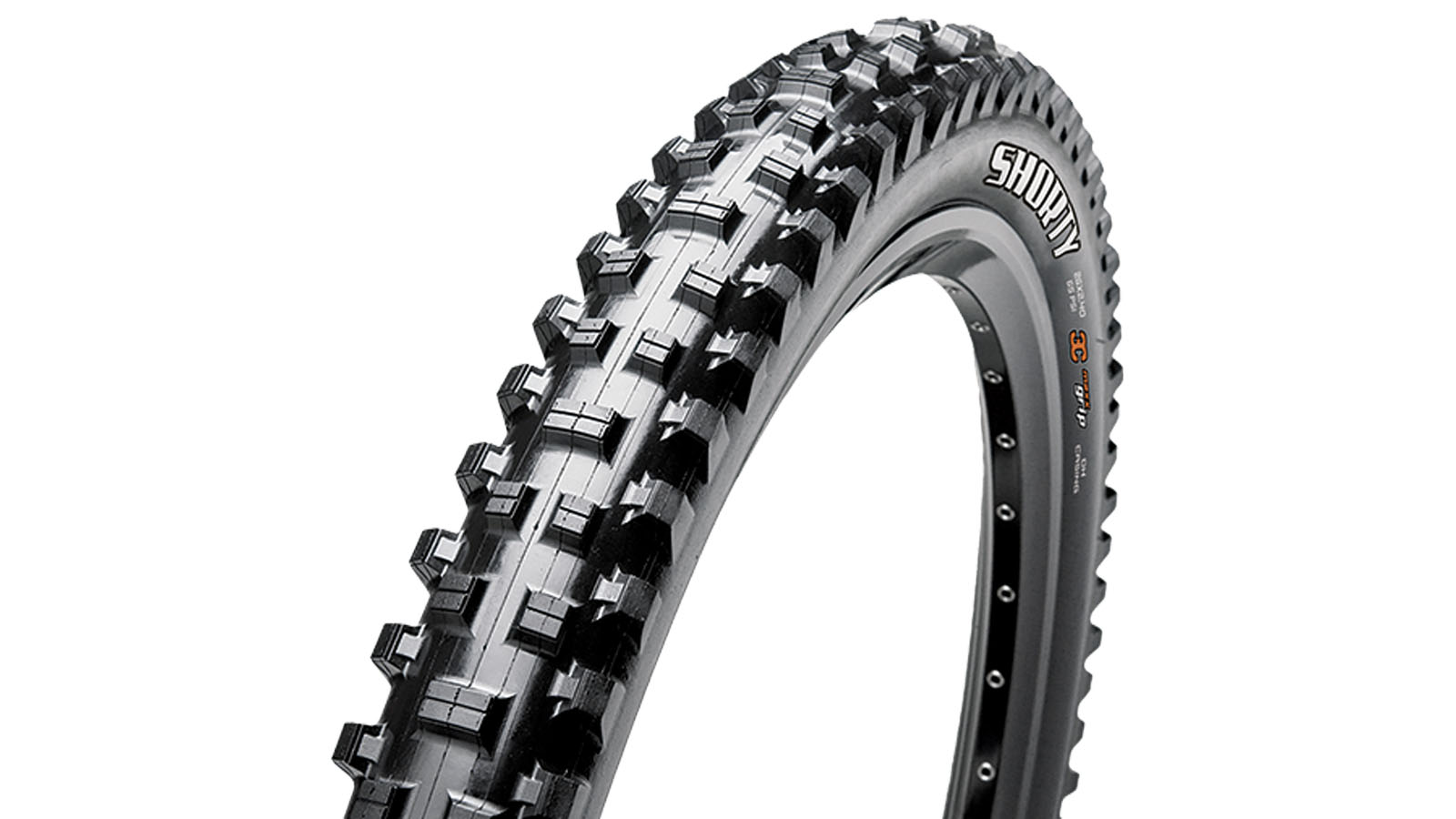
Maxxis Shorty 3C MaxTerra
Specifications
Reasons to buy
Reasons to avoid
Initially designed for downhill riders, the Shorty comes in a lighter-duty version for those who aren't riding lift-assist or shuttle runs. The open block tread pattern sees knobs that are slightly less aggressive than some of the tires in this round-up, the blocks won't fold and squirm as much on dry trails, and it can be used comfortably in a wider range of conditions.
Even with the shorter knobs, it's no slouch in the mud, with the square knobs and staggered shoulder tread hooking up on slimy corners. The open pattern prevents the tires from packing with mud, and the alternating siped center tread does well to hang onto wet rocks and roots.
As a folding tire, the Shorty is only available in the 3C MaxTerra compound which sees a hard rubber used as the base for the knobs, which is topped by a soft compound on the shoulders and medium hardness up the center strip. All of this adds up to max grip without sacrificing too much rolling resistance.

Hutchinson DZO
Specifications
Reasons to buy
Reasons to avoid
Hutchinson's DZO is pegged for when the conditions are truly torrential, with massive spikes offering velcro-like traction when the dirt is in a colloidal suspension — mud.
The casing is supple, taking care of the square edges despite its modest air volume and allows the aggressive tread to track the ground. With super-soft shoulder blocks and harder center tread, the pattern provides support on either side of the wide shoulders while the base tread is totally smooth to limit the amount of mud that can grab on.
It should come as no surprise that the fang-like knobbies squirm on hardpack, but all things considered, the tall tread makes for surprisingly low rolling resistance.

Michelin Wild Mud Advanced
Specifications
Reasons to buy
Reasons to avoid
Weighing in at over a kilo per tire, the Wild Mud Advance is anything but feathery on the ups, but the aggressive widely spaced twisted knob tread blocks provide an unwavering grip on wet descents.
The Wild Mud has blocks on top of blocks, and the base knobs are topped by a second set of offset blocks, said to twist and straighten under load, hitting the eject button on mud when they snap back — they are also easily clipped, should the full 8mm be more traction than you need.
The replacement for the Wild Mud Enduro, the Wild Mud Advanced is made from the brand's ultra-soft Gum-X rubber compound which allows the tire to hold on in the deepest, sloppiest conditions. Unfortunately, there is no such thing as a free lunch, and the Wild Mud Advance is slow-rolling on everything except the steepest trails.
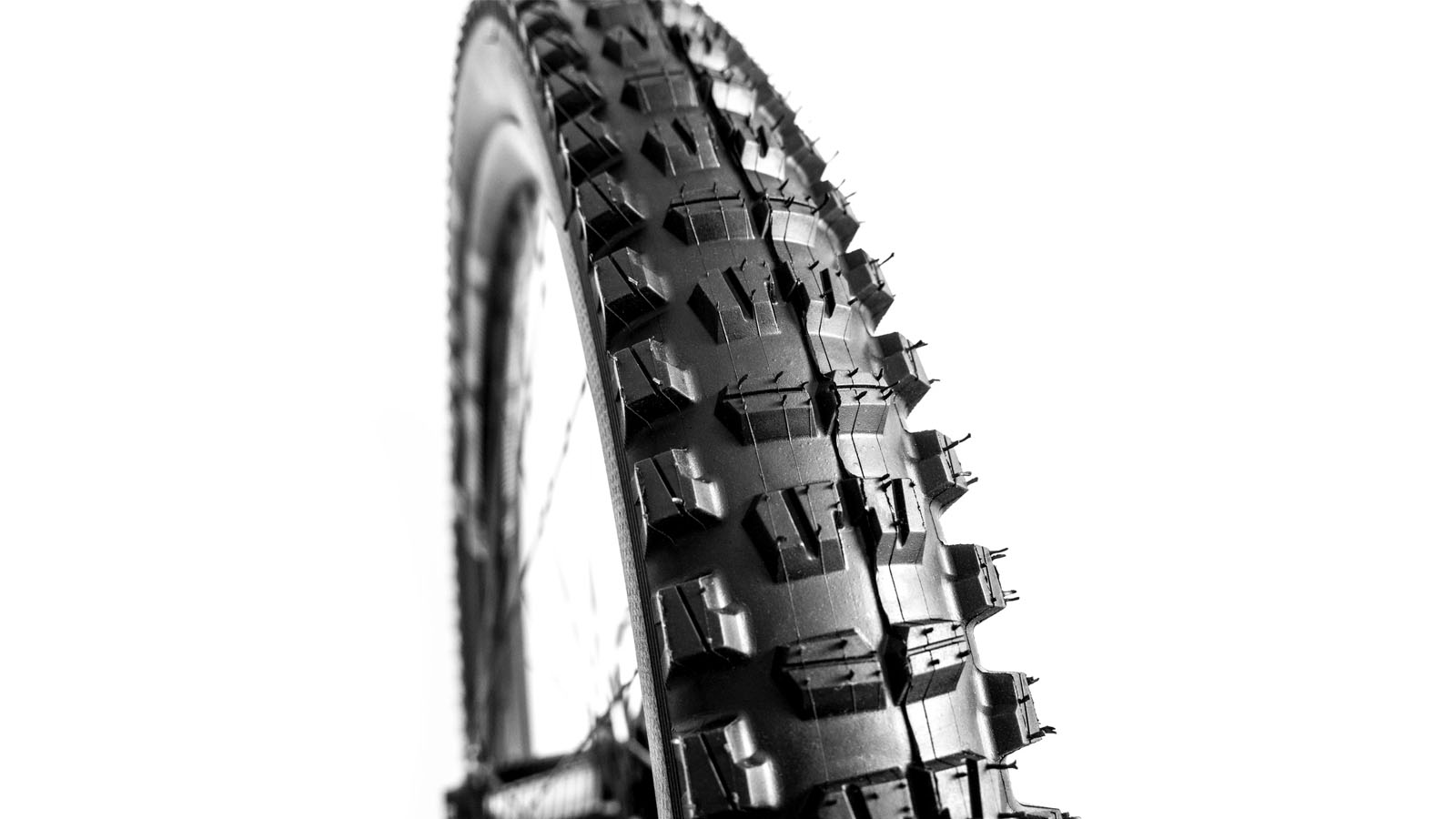
e*thirteen All-Terrain Enduro
Specifications
Reasons to buy
Reasons to avoid
e*thirteen's All-Terrain Enduro is an off-camber cornering machine, with massive and side spikes that sink deep into the murky abyss. The center tread isn't nearly as aggressive, which makes for a box-like profile, and the open spacing prevents mud from building up.
The All-Terrain Enduro tire comes in three compounds, with the Race version settling in the middle of the trail with high-tack low-rebound side knobs and a harder-wearing faster-rolling center strip.
With a 2.3in width, and a square profile, they feel quite broad and don't cut through deep mud like a knife - you'll have more traction than you know what to do with.
Everything you need to know to choose the best MTB mud tires
What tire tread do you need for riding in the mud?
To have any traction in the mud, you're going to need a tire with tall spiky tread; look for widely spaced knobs that will help the tire clear muck. Unfortunately, with the aggressive tread required to dig in, these tires will not be fast rolling or provide much grip on hardpack surfaces.
If your trails feature a lot of sections that aren't very muddy then you may be better off with an all-round tire as it will grip better on hardpack or well-draining trails and roll significantly faster, especially on the climbs.
A tire's profile and width will also have a great effect on how the tread on the best MTB tires for mud performs. A tire with a wide footprint will float on top of the gunk, while a thinner tire, something below 2.3-inches, will allow you to carve through it and hook up on the solid soil below.
A square profile will help you dig in on off-camber and low-traction corners, while a round tire will be more predictable when it does let go, and will allow you to carry more speed through flat corners. Remember that choosing the best mountain bike wheels will also play a role in the width and shape of your tire, with broader rims squaring off the profile.
What tire compound should you look for?
The rubber compound of a tire is a bit of a dark art with most brands very secretive when it comes to their proprietary formulas, and some are distinctly better than others.
Softer compounds will offer better traction on hard surfaces and absorb more vibration, but usually, wear out faster and can cause additional drag. Some brands will offer dual compounds which combine a harder compound to offer support with a softer compound laid on top to provide improved traction.
If your trails feature a lot of rocks and roots between muddy sections, you will want to choose a tire with a softer compound as this should give you more grip.
Do mud tires need more puncture protection?
When it comes to muddy corners you're more likely to be drifting through most of it, and sliding into rocks and sharp edges in the process. With this in mind, you're going to be better off running a more substantial and puncture-resistant casing. The trade-off will be a slightly heavier and slower rolling tire, but the alternative is changing a muddy flat.
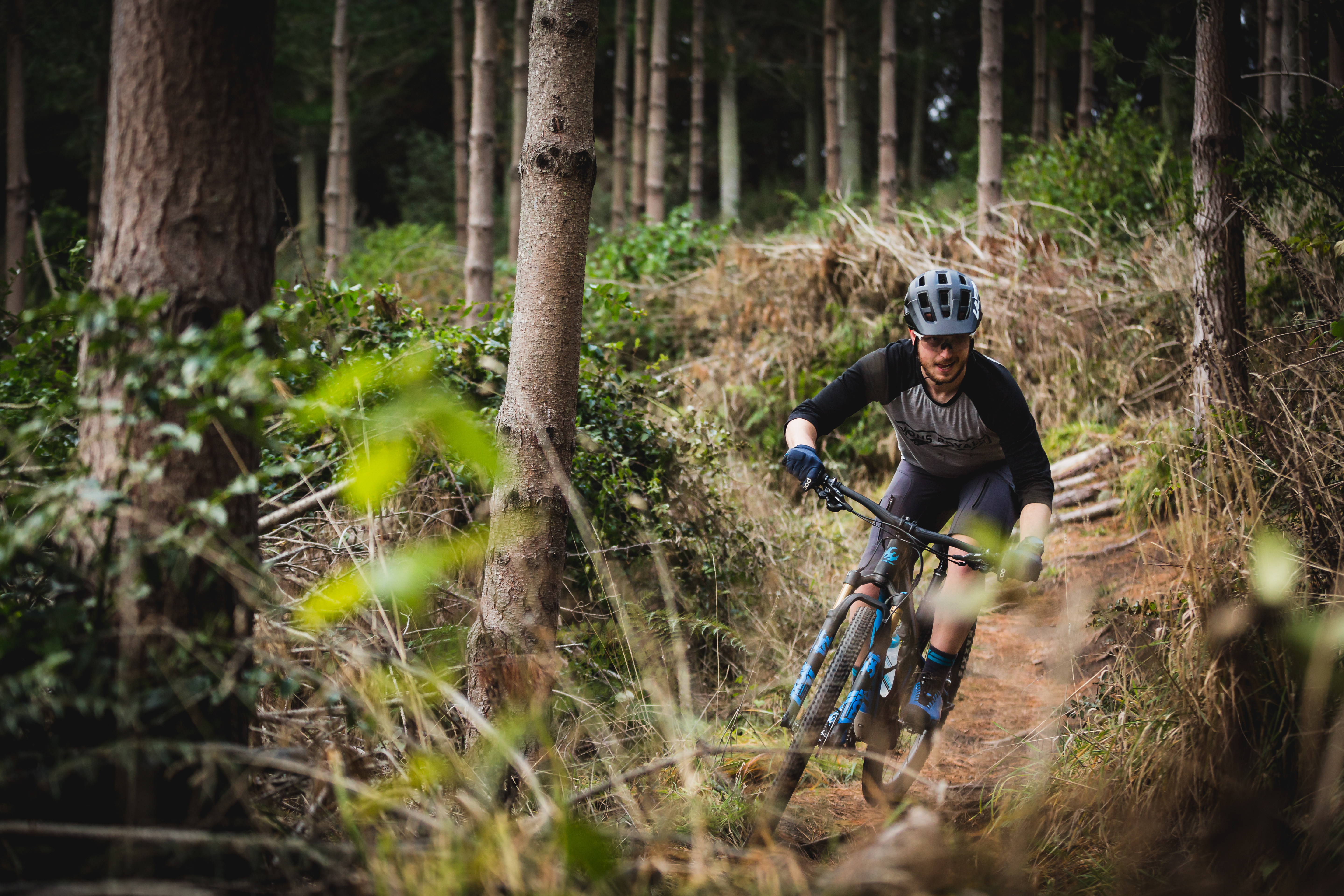
Born and bred in Colorado, and now based in Australia, Colin comes from a ski racing background and started riding as a way to stay fit through the summer months. His father, a former European pro, convinced him to join the Colorado State University collegiate cycling team, and he hasn't stopped since. It's not often he pins on a number nowadays, and you'll likely find him in search of flowy singletrack, gravel roads and hairpin corners. Colin has worked at Bikeradar and is a regular contributor to Australian Mountain Bike and Cyclist magazines.
Rides: BMC Team Machine SLR01, Trek Top Fuel 9, Ibis Ripley
- Rich OwenEditor, BikePerfect
